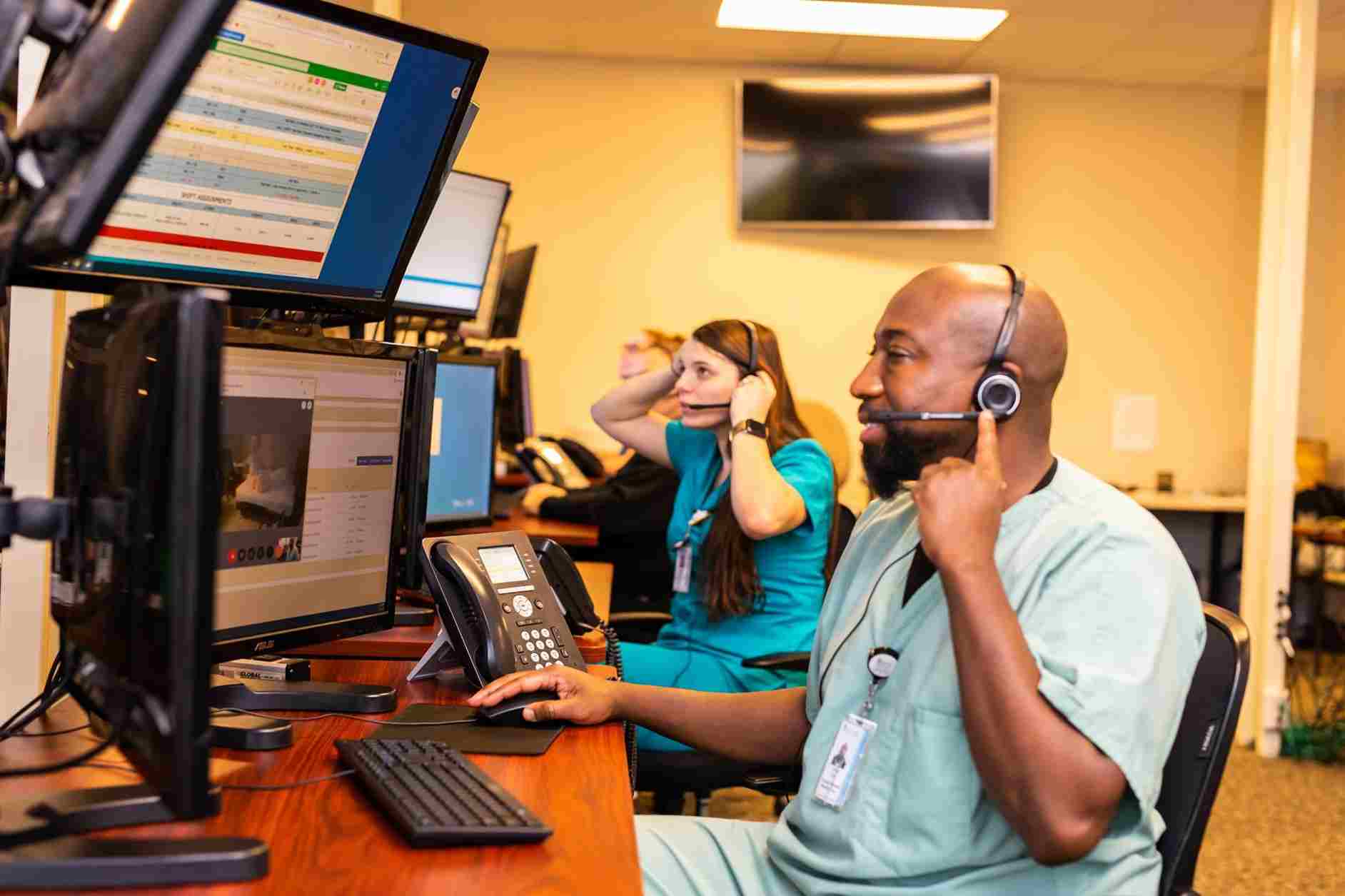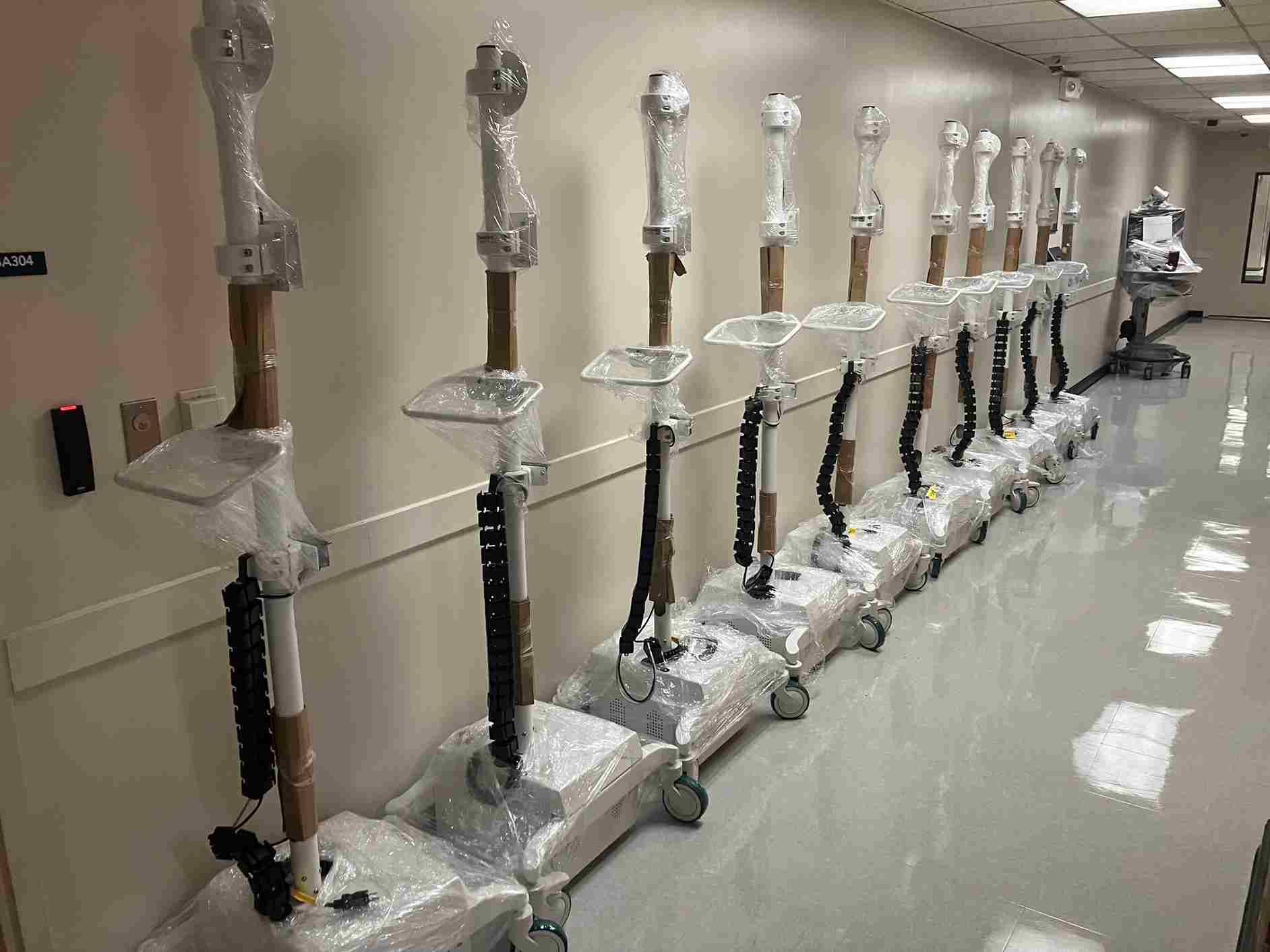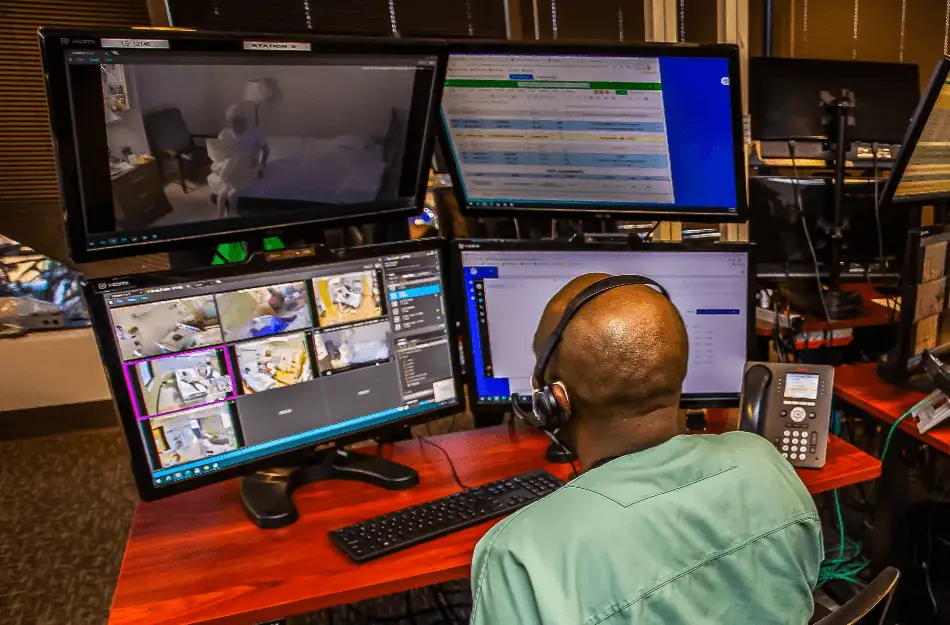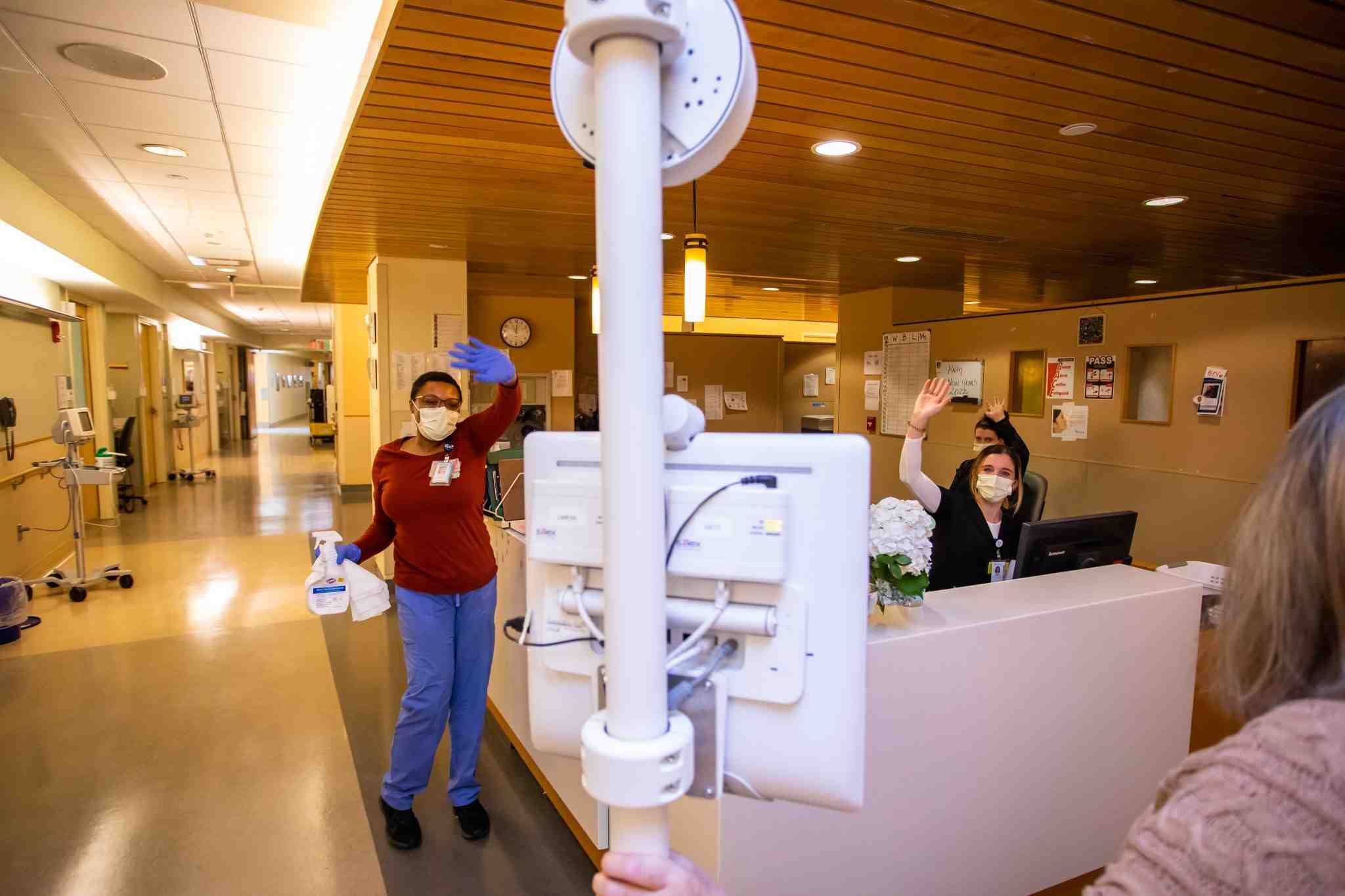By 2025, the U.S. is expected to experience a shortage of 446,300 home health aides; 95,000 nursing assistants; 98,700 medical and lab technologists and technicians; and 29,400 nurse practitioners. It’s stats like these that propel the VirtuAlly mission.
Every day, our people work hard to infuse both next-gen technology and compassion into the world of remote patient care. Now, we’re leading the way in telehealth by human-centered remote care without compromise.
We’re not a new company or one so big that we don’t know each other’s names. Mostly we’re known by word-of-mouth popularity throughout our region. So, to help others find us online and learn why our clients count on us to keep patients safe and costs down, we decided to publish a list of frequently asked questions. We also want to offer you resources and help you consider options that improve patient safety and care.
Read on. And if you have other questions, please give us a shout!
How did VirtuAlly get started?
The initial concept for VirtuAlly began as an internal program at an academic medical center in 2017. At that time the focus was on improving quality and safety metrics while reducing costs through virtual monitoring. But when the coronavirus pandemic caused the great resignation in healthcare, the program pivoted out of the academic medical center (to address the healthcare staffing crisis) into an independent company headed by Joseph Wechsler, CEO.
What is remote patient monitoring (RPM)?
Remote patient monitoring is software, services, and devices that physicians and health care providers use to manage various acute and chronic health conditions.
For example, a patient may wear a wireless device, typically in their home, that communicates electronically to their care team whether their blood pressure has increased. Once the patient’s information is collected and analyzed, their medical care provider may alter a prescription or adjust the patient’s treatment plan.
What is the top benefit of remote patient monitoring?
A major benefit of RPM is that it gives physicians and other clinical staff real-time, actionable insight into patient vitals and other health-related data. Clinicians use this data, which is captured through digital health technologies and closely related workflows and processes, to make care-administering decisions that affect patient health outcomes.
For example, with remote patient monitoring, care providers can collect and view detailed data such as a patient’s heart rate, blood sugar levels, and body weight—all without the patient being physically located in the same place as their care provider. So, if necessary, a physician can intervene in a patient’s treatment plan quickly and without a patient having to schedule an in-office appointment.
In essence RPM allows providers to continue tracking patients’ healthcare data once they’ve been discharged. This two-way digital communication encourages patients to stay engaged with their progress and be proactive with their health.
Why is remote patient monitoring in demand?
Essentially Covid-19 was the driving factor behind the huge demand for remote patient monitoring. Another influencing factor is improved patient outcomes. There is a higher frequency of information sharing between patients and their care providers which in turn increases compliance. Cost reduction for medical resources, particularly 1:1 patient sitting and increasing revenue streams for providers play a major role, too.
Here’s a comprehensive guide on remote patient monitoring published by the Health Resources & Services Administration.
Does VirtuAlly offer remote patient monitoring?
Our patient monitoring system does not use devices that patients wear or use at home. Instead, our system combines two-way audio visual and motion sensor technology, continuous virtual monitoring software, and well-trained, medically skilled remote technicians (also called patient safety observers) who receive alerts when patient safety is at risk due to dangers that care providers can’t always see.
For example, a hospital or patient care setting may want to invest in patient fall prevention for at-risk patients due to
-
Is at risk or has a history of falls
-
Is at risk or has a history of wandering elopement
-
Impulsive or restless behaviors
-
Dementia
-
Alzheimer’s
-
Pulling at lines and tubes
-
Acts of self-harm and/or potential to harm clinical staff
 Patient Safety Observers inside command center
Patient Safety Observers inside command center
Our solution provides continuous 24/7 virtual patient observation. Because of the way our system is built, how it integrates with a professionally staffed command center, and the way it’s delivered, we refer to it as continuous virtual patient monitoring. We’re proud of the way it has enabled us to transform the telehealth and remote patient care industry. See the types of health care systems that benefit from our virtual patient monitoring solution.
What distinguishes VirtuAlly from other remote patient monitoring companies?
VirtuAlly is the only telehealth company in the market to offer a full turnkey service for tele-sitting and virtual nursing by offering both technology and the staffing component. Plus, we’re much more than just our technology. We come fully equipped with trained, compassionate staff on the other side of the monitor. And, as we strive to achieve virtual care impact like never before, have evolved to be nearly technology agnostic, allowing us to advise health care facilities on their technology needs.
Fun fact: as of 2023, there are 1,387 Telehealth Services businesses in the U.S—see source here.
What third-party systems integrate well with VirtuAlly?
VirtuAlly offers integration with electronic medical records (EMRs) as well as a wide variety of technology partners to deliver services. As part of the consultative process, VirtuAlly helps facilities identify the correct technology solution on an individual basis. If a facility does not wish to integrate or does not have an EMR, we have a proprietary documentation software system that will capture all documentation and produce reports at the facility, unit, and patient level.

Fleet of VirtuAlly mobile monitoring carts
Is virtual patient monitoring considered telehealth?
In short, yes. While some patient monitoring requires a nurse or a provider to be the observers, other uses cases, particularly when needed for patient safety will allow for non-clinical personnel to do the observation. However, they are still considered a nursing support service and an extension of that clinical team. Our virtual nurses are also seen as an extension of the in-person clinical teams they serve. Their role in patient monitoring coincides with our patient safety observers, but their function and offerings more closely align with the traditional Telehealth services.
What requirements must a patient meet to receive continuous virtual patient monitoring?
We have a proprietary algorithm approach we use to help facilities drive the resources to the right patients. In most cases, we can integrate this algorithm with their EMR to create a dashboard that allows both our team and client to have visibility in real time of their most vulnerable patient populations.
Does VirtuAlly offer customized monitoring plans?
We sure do! As part of our assessment process, we evaluate the needs of each facility using their historic data and consider specific goals they wish to achieve with our services. We then make our recommendations which may include multiple service and/or technology options to achieve those goals. In some cases, we provide the full turnkey service and in others we use a hybrid model.
Mobile audio visual cart was placed inside patient’s room in nursing facility
What recent success story illustrates VirtuAlly capabilities?
Recently our observation team and equipment supported nearly 100 endpoints of a hospital system’s main campus. One psychiatric unit saved nearly $180,000.00 in direct staffing cost during the first year of operation, while boosting staff retention by nearly 15 percent. The sitter team decreased from a staff of nearly 50 to a staff of five. For more details, read about our solution to a major issue surrounding patient observation sitters.
What should hospital systems/site administrators consider before choosing a VirtuAlly solution?
Consider all the metrics you wish to address and provide as much data as possible during the assessment process. This will optimize collaboration between teams as well as provide a more accurate picture of their return on investment.
If you’re considering our solution, you’ll find an overview of our process here. You can also start by booking a demo. Our demo gives you an opportunity to ask more questions. There’s no cost for a demo, and of course there’s no pressure for you to make a buying decision.
What’s next for VirtuAlly? Will there be new releases to virtual patient monitoring technology?
We have lots of exciting things happening. For instance, we plan to offer new services in virtual nursing / remote patient monitoring and optimizing our software with cutting edge AI safety features. Plus, we’re opening another observation hub in the US. Location details will be released before the summer of 2023.
We’re your allies and always here to support you.
As the healthcare industry continues to navigate through exceptional challenges and never-before-seen pressures, we’re grateful for the opportunity to influence positive change and render top-quality service to patients and caregivers where and when they need it most.
For patients, this means increasing safety by reducing incidents of falls, self-harm, and suicide attempts within standard and specialized care facilities across the country.
For caregivers, it’s providing a peace of mind from a second set of trained eyes and ears plus integrated electronic medical record-keeping, so you maintain focus on what matters most: caring for patients.
VirtuAlly Patient Safety Observers are more than technicians monitoring patients from behind a screen, they’re friendly faces and compassionate humans who become a key part of your care-giving team.
Request your free demonstration to learn how you can take patient care to a higher level.


